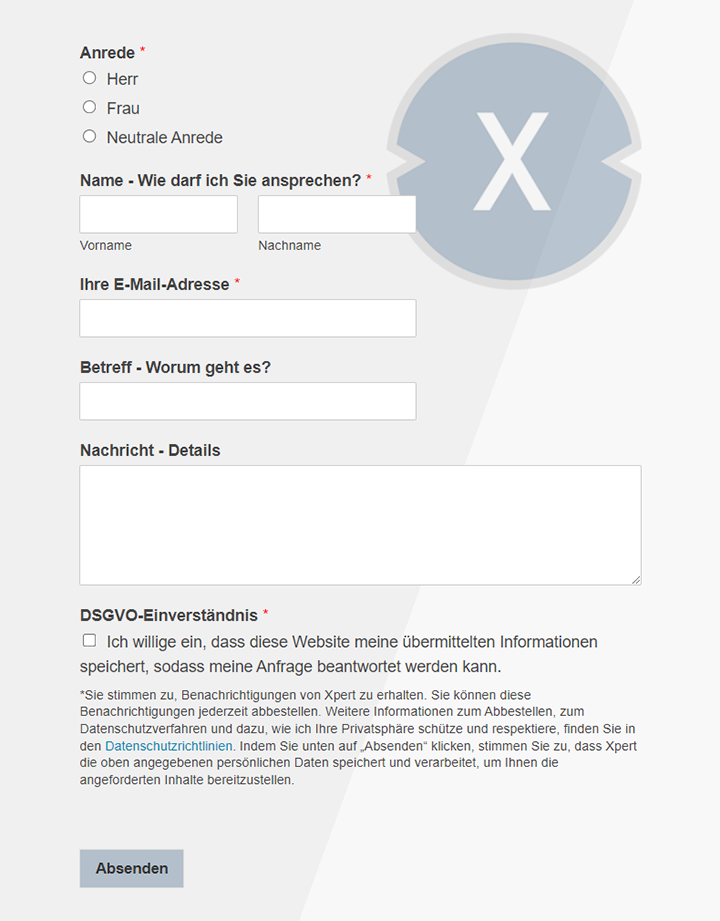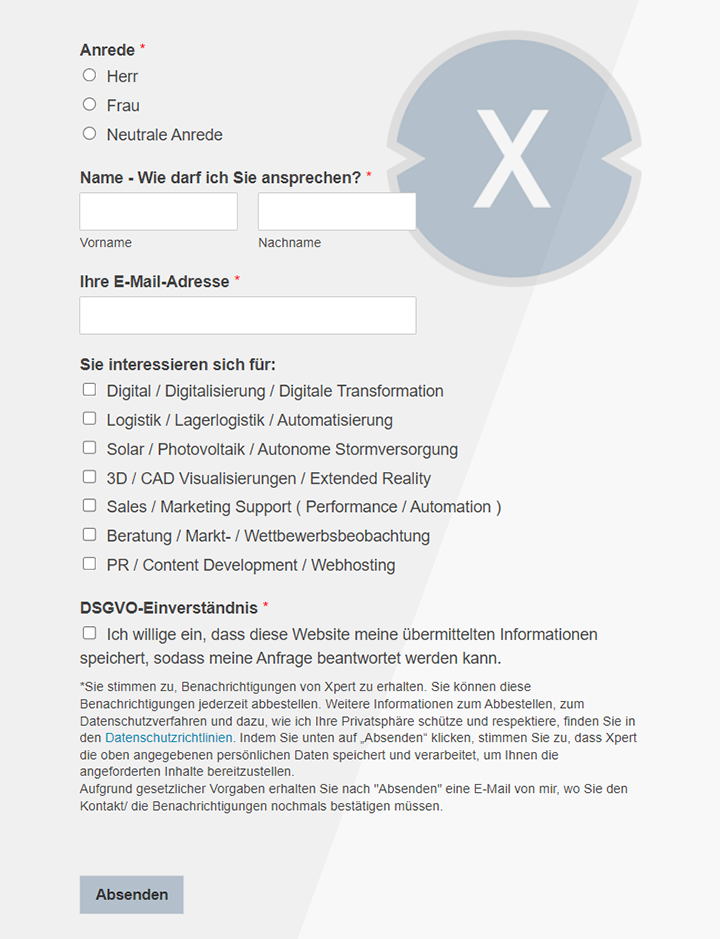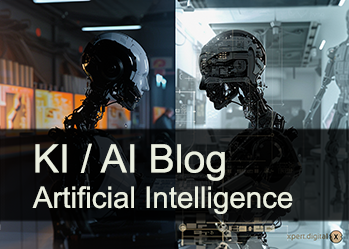Humanoid robots between vision and reality: Where do we really stand today?
Xpert pre-release
Language selection 📢
Published on: July 2, 2025 / update from: July 2, 2025 - Author: Konrad Wolfenstein
Technological breakthroughs in humanoid robots: the gap between possible and feasible
Human -like machines in change: Why Humanoid robotics is not yet commonplace
The area of humanoid robotics is in an unprecedented development phase that is characterized by impressive technological breakthroughs and simultaneous practical limits. These human -like machines are on the threshold between visionary possibilities and the realities of a complex technical implementation.
Suitable for:
- Humanoids, industrial and service robots on the upswing- humanoid robots are no longer a science fiction

The current technology landscape
The development of humanoid robots has made considerable progress in recent years, which are primarily advanced through progress in artificial intelligence. These machines can now carry out complex movements that were previously considered unthinkable. With its Atlas robot, Boston Dynamics has set new standards, which was converted from hydraulic to electrical systems and thus achieves precise movements and a larger radius of movement. The electrical actuators enable Atlas to carry out demanding actions and have advanced machine learning algorithms that enable him to identify and manipulate objects in real time without human interventions.
Tesla is working intensively on his Optimus robot, whose second generation is to be introduced as early as 2025. The company plans to produce several thousand units by the end of 2025 and possibly even build 10,000 optimus robots. Tesla uses his expertise from automotive and battery production to create competitive advantages. The Optimus has a new robot hand with 22 degrees of freedom and is to be positioned in the medium term at a price of USD 20,000.
Figure Ai has already realized the first commercial sale of a humanoid robot with its Figure 02. This 1.68 meter robot weighs 70 kilograms, can lift 20 kilograms and works for five hours with one battery charge. Through cooperation with Openaai, Figure 02 can react to natural language instructions and is intended to become a thinking robot that can make decisions independently.
Technical skills and areas of application
Modern humanoid robots are characterized by their versatility, which distinguishes them from conventional industrial robots. They can work in environments that were originally designed for humans without the necessary adaptations of the infrastructure necessary. This flexibility makes you particularly valuable for tasks in logistics, assembly and maintenance.
The first pilot projects already show practical applications: Amazon tests the digit of Agility Robotics in its warehouses for physically exhausting work such as handling and transporting containers. Mercedes tests the Apollo from Apptronik, which is 1.73 meters tall, weighs 73 kilograms and can lift 25 kilograms. BMW uses Figure 02 in body construction, where it autonomously inserted sheet metal parts in machines.
The technical progress now enables these robots to automate up to 40 percent of the activities previously performed manually. Experts expect the skills of humanoid robots to improve by 35 to 40 percent between 2023 and 2025. In the first wave of development, you can mostly take over logistical activities such as sorting, transporting and providing. From 2028 to 2030, they should also be able to manage activities with a high variance and complex processes in assembly.
Suitable for:
Market development and economic perspectives
The global market for humanoid robots is located in a phase of explosive growth. Various studies predict different development scenarios: the market was estimated at $ 1.68 billion in 2023 and is expected to grow to $ 23.73 billion by 2032, which corresponds to an average annual growth rate of 34.2 percent. Other estimates assume $ 4.16 billion in 2023 and expect an annual growth rate of over 37 percent to 2032.
The most ambitious forecasts come from industry experts: Goldman Sachs estimates that the global market will reach a volume of $ 38 billion by 2035. ARK Invest sees a maximum market potential of $ 24 trillion. A Horváth study predicts that 20 million humanoid robots worldwide will be deployed worldwide by 2030, compared to the approximately 4.3 million industrial robots and cobots.
The cost development shows a positive tendency: While the manufacturing costs are still around $ 250,000 per unit today, a remarkable cost reduction can already be observed. High-quality humanoid models have reduced their prices from 250,000 to $ 150,000 within one year-a decrease of 40 percent. Elon Musk predicts that the costs will fall to around $ 20,000. Simple models such as the Unitree G1 are already available for $ 16,000.
Practical challenges and limits
Despite the impressive progress, humanoid robots face considerable practical challenges. A central point of criticism concerns occupational safety: the European Machinery Directive and harmonized standards such as ISO 12100 place high demands on the safety of machines. When introducing human-robot collaboration, significant challenges have already become visible that become even more complex in humanoid robots.
The complexity of human design is critically questioned by experts. Stefan Lampa, a robotic expert, argues: "The configuration of a person is not ideal for a car manufacturer. Why two arms, why two legs? This makes control of it much more complex". Many of the skills shown in marketing videos are remotely controlled and not autonomous, which raises the question of actual autonomy.
Technical limits continue to consist of generalization and consistent planning over longer periods. Vision-Language models can not generalize particularly well, which represents a fundamental problem for autonomous decisions. The lack of training data for robot models means that a lot of training takes place in simulations, with the transfer to the real world with it.
🎯🎯🎯 Benefit from Xpert.Digital's extensive, fivefold expertise in a comprehensive service package | R&D, XR, PR & SEM

AI & XR 3D Rendering Machine: Fivefold expertise from Xpert.Digital in a comprehensive service package, R&D XR, PR & SEM - Image: Xpert.Digital
Xpert.Digital has in-depth knowledge of various industries. This allows us to develop tailor-made strategies that are tailored precisely to the requirements and challenges of your specific market segment. By continually analyzing market trends and following industry developments, we can act with foresight and offer innovative solutions. Through the combination of experience and knowledge, we generate added value and give our customers a decisive competitive advantage.
More about it here:
Lower labor costs by 70 percent: How Humanoid robots transform the economy
Social and ethical implications
The integration of humanoid robots into the world of work will have far -reaching social effects. Jobs could be affected to a considerable extent: an ING-DIBA study predicts that long-term 59 percent of jobs in Germany could be at risk, which corresponds to around 18 million of 30 million employees. Workers and administrative workers are particularly threatened with an 86 percent probability of replacement.
A current IFO survey shows that 27.1 percent of German companies expect that artificial intelligence will make jobs unnecessary within the next five years. In the industrial sector, 37.3 percent of companies even expect AI-related job reduction. If there is a job cuts, affected companies expect a decline in their workforce by an average of 8 percent.
Ethical questions are becoming increasingly important. The moral and legal status of humanoid robots is one of the current top topics in philosophy and legal theory. Philosophy professor Wolfgang Schröder argues that avoiding robots could prevent disrespectful treatment to preserve a normative basic ethical continuum in human behavior. Those who deal with humanoid robots with respect could also keep respect for people.
Robot ethics differentiates between different perspectives: robots as pure machines, robots with intrinsic ethical dimension, robots as moral agents or even as new species. This discussion is fueled by the increasing autonomy of robots, the new degree of independence through artificial intelligence.
Regional development differences
The development of humanoid robots is strongly regionally shaped. China follows an aggressive strategy and wants to start mass production from 2025. The Chinese Ministry of Industry and Information Technology has submitted a plan to reach mass production maturity after which Humanoid robots are to reach mass production by 2025. By 2027, China is aiming to develop humanoid robots that can be thinking, learning and can be innovative. Chinese companies presented 27 new robots at the World Robot Conference 2024 in Beijing.
The United States is experiencing a renaissance in robotics, driven by software -oriented service robots and high investments. Companies such as Tesla, Boston Dynamics and Figure AI lead technological progress. The focus is on mobile robots, humanoids and four -legged friends, whereby the solutions are more substantial than in other regions.
Europe is more reluctant and focuses more on hardware and cost -effective corporate management. One of the few exceptions is the German company Neura Robotics, which has developed a humanoid robot with its 4NE1 robot, which works autonomously and safely in real environments with people. Igus from Cologne also offers a humanoid robot for less than 50,000 euros with the Iggy Rob.
Suitable for:
- Europe as a pioneer of automation: In 2024, automobile manufacturers have integrated a total of 23,000 new industrial robots
Ten billion humanoid robots until 2040: How our working world will change fundamentally
The future of humanoid robots will be shaped by several trends. Technological advances will concentrate on AI and movement control, energy efficiency and battery technology, material sciences and production techniques as well as sensors and environmental perception in the coming years. Elon Musk predicts that around ten billion humanoid robots will exist on Earth by 2040.
The business models are expected to change from direct sale to Robot-as-A-Service. Manufacturers will rent or lease their robots, whereby customers have to pay an amount per working hour. This enables manufacturers to earn more more per robot than in direct sale. The labor costs per hour could be 68 to 74 percent lower than in human workers.
Areas of application will initially focus on industrial environments before humanoid robots find their way into private households. Experts assume that it will still take 5 to 8 years before robots can take on all important tasks in the household. Humanoid robots can cope better in orderly factories than in the private environment.
The social adjustments will require new concepts for education, social systems and work organization. Models such as machine control, hybrid income structures or technological investments are focused on concrete political design. The education system is under pressure to prepare future generations for a technological world and at the same time accompany existing workers in the transition.
Humanoid robots: between the future vision and industrial reality
Humanoid robots are at a turning point between visionary possibilities and practical realities. The technological advances of recent years, especially in artificial intelligence, have developed these machines from science fiction objects to serious industrial tools. While the first commercial applications are already reality and the market forecasts are predicting exponential growth, there are still considerable challenges in technical implementation, occupational safety and social integration.
The development is largely shaped by an international race between China and the United States, while Europe risks losing connection. The economic potential is considerable, but they are associated with fundamental changes in the labor market and social structures. The coming years will be crucial for whether humanoid robots can redeem their promise as universal helpers or whether they end as an overpriced technical gimmick. However, it is certain that their integration into society will require well -thought -out political, ethical and economic framework conditions to maximize the opportunities and minimize the risks.
Xpaper AIS - R&D for Business Development, Marketing, PR and Content Hub

Xpaper AIS Ais Possibilities for Business Development, Marketing, PR and our Industry Hub (Content) - Image: Xpert.digital
This article was "written". My self-developed R&D research tool 'Xpaper' used, which I use in a total of 18 languages, especially for global business development. Stylistic and grammatical refinements were made in order to make the text clearer and more fluid. Section selection, design as well as source and material collection are edited and revised.
Xpaper News is based on AIS ( Artificial Intelligence Search ) and differs fundamentally from SEO technology. Together, however, both approaches are the goal of making relevant information accessible to users - AIS on the search technology and SEO website on the side of the content.
Every night, Xpaper goes through the current news from all over the world with continuous updates around the clock. Instead of investing thousands of euros in uncomfortable and similar tools every month, I have created my own tool here to always be up to date in my work in the field of business development (BD). The xpaper system resembles tools from the financial world that collect and analyze tens of millions of data every hour. At the same time, Xpaper is not only suitable for business development, but is also used in the area of marketing and PR - be it as a source of inspiration for the content factory or for article research. With the tool, all sources worldwide can be evaluated and analyzed. No matter what language the data source speaks - this is not a problem for the AI. Different AI models are available for this. With the AI analysis, summaries can be created quickly and understandably that show what is currently happening and where the latest trends are-and that with Xpaper in 18 languages . With Xpaper, independent subject areas can be analyzed - from general to special niche issues, in which data can also be compared and analyzed with past periods.
We are there for you - advice - planning - implementation - project management
☑️ SME support in strategy, consulting, planning and implementation
☑️ Creation or realignment of the digital strategy and digitalization
☑️ Expansion and optimization of international sales processes
☑️ Global & Digital B2B trading platforms
☑️ Pioneer Business Development
I would be happy to serve as your personal advisor.
You can contact me by filling out the contact form below or simply call me on +49 89 89 674 804 (Munich) .
I'm looking forward to our joint project.
Xpert.Digital - Konrad Wolfenstein
Xpert.Digital is a hub for industry with a focus on digitalization, mechanical engineering, logistics/intralogistics and photovoltaics.
With our 360° business development solution, we support well-known companies from new business to after sales.
Market intelligence, smarketing, marketing automation, content development, PR, mail campaigns, personalized social media and lead nurturing are part of our digital tools.
You can find out more at: www.xpert.digital - www.xpert.solar - www.xpert.plus





























